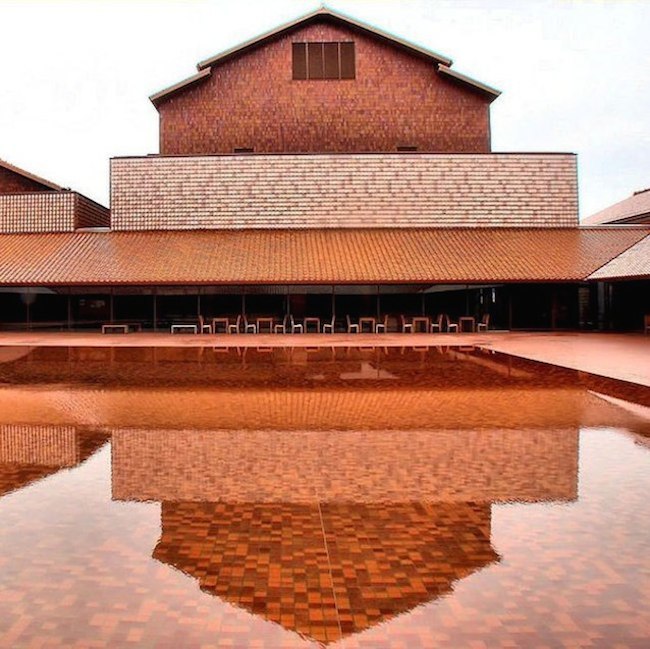MASUDA, Japan — A frequent cliché in architecture is to claim that your building “fits in” with its surroundings. It sounds too passive, as though the building is doing the best it can to escape notice. Architect Hiroshi Naito of Naito Architects & Associates has a different spin on that idea. His buildings “breathe with” their surroundings. Isn’t that much better? It implies a relationship, and a very intimate one at that.



In 2005 the firm completed work on the Shimane Arts Center in Shimane Prefecture. Called the “Grand Toit” after the French name meaning “large roof,” the theater and concert hall uses 280,000 tiles to gently impact its surroundings. The Sekishu-gawara tiles hail from the Iwami region in Japan. In addition to being an old signifier of the region’s culture, the tiles are known for their subtle red color. The theater blends Eastern and Western, contemporary and traditional influences in such a way that all quadrants are treated with respect.
In their writeup about the Grand Toit, Archeyes states that the building’s red hue shines on the stores and houses lining the nearby street. It’s as though the building has a visible aura of culture that wraps around the neighborhood. Additionally, the roof tiles change with the light so that color and texture shift. Throughout the day one can see the building appear as red or orange, even green or gold.
Audio nerdery isn’t our specialty here at CFile, but we were intrigued by a fact about the acoustics of the building. The theater has just the right amount of reverb. With an empty house, the acoustics will hold a note for exactly 1.8 seconds. We imagine this would allow the audio to sound full, without crossing over into muddy. We also like the mental image of a lone cello player playing just one note on the stage while someone in the gallery frowns at a stopwatch.

Naito also has a charming personality. In a field full of fevered and deranged egos, he is an architect who is deferential and humble. He thinks of his talent as a force external to himself, it resides with him for a while and he does his best to honor it. The term “great ordinariness” could sound like an insult, but when he uses it it seems to signify grace and poise.
I am just an ordinary man. Looking back on my past, it can certainly be said that I have been privileged to have been granted with many fortunate opportunities. Yet I have never been marked by any exceptional talent. I thus believe that the things that I can do can be done by anybody.
It may be possible that what is needed right now, and what we will eventually arrive at, is an appreciation for a sense of a “great ordinariness”.
Do you love or loathe this use of contemporary ceramics? Let us know in the comments.






Add your valued opinion to this post.